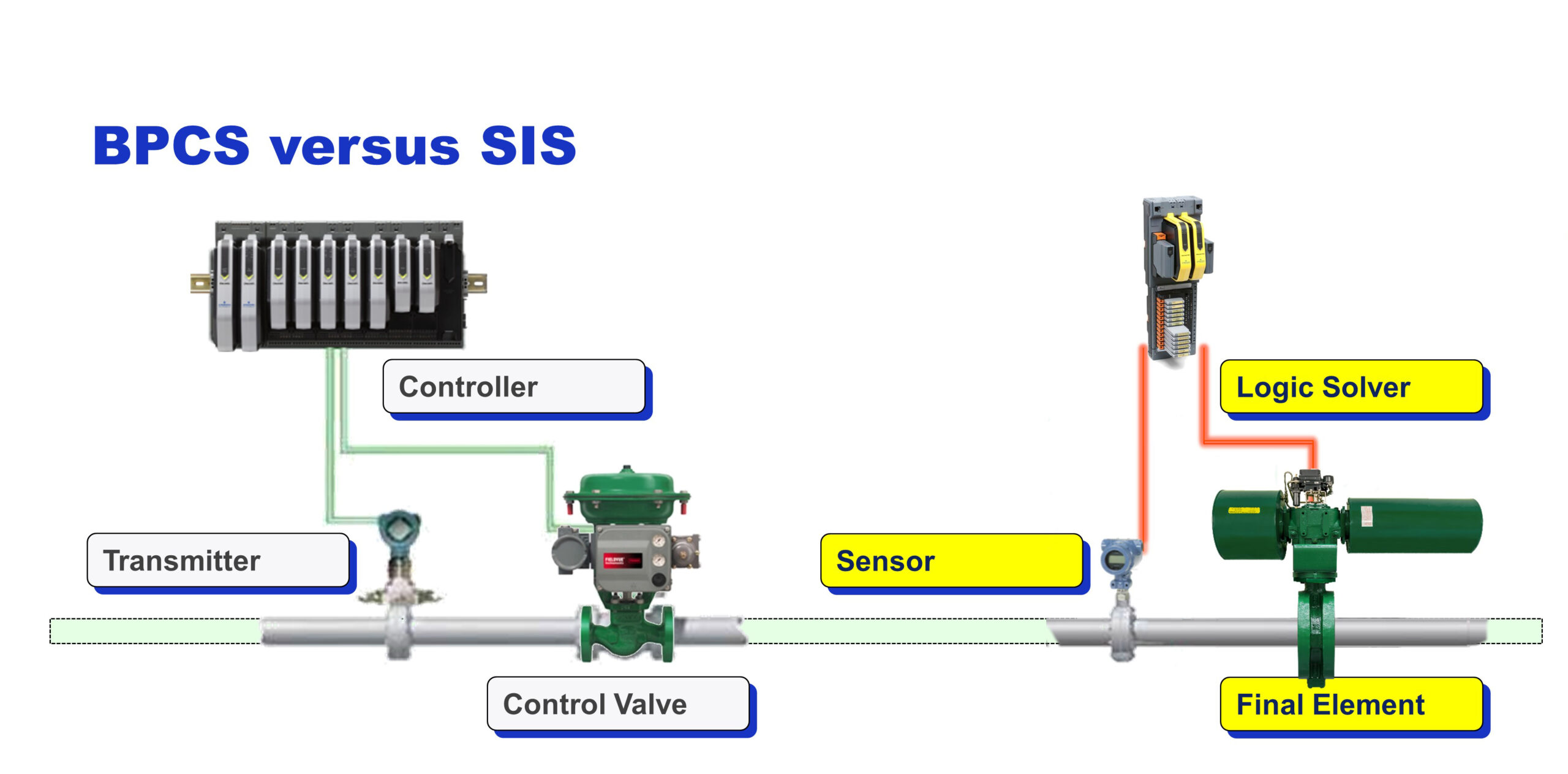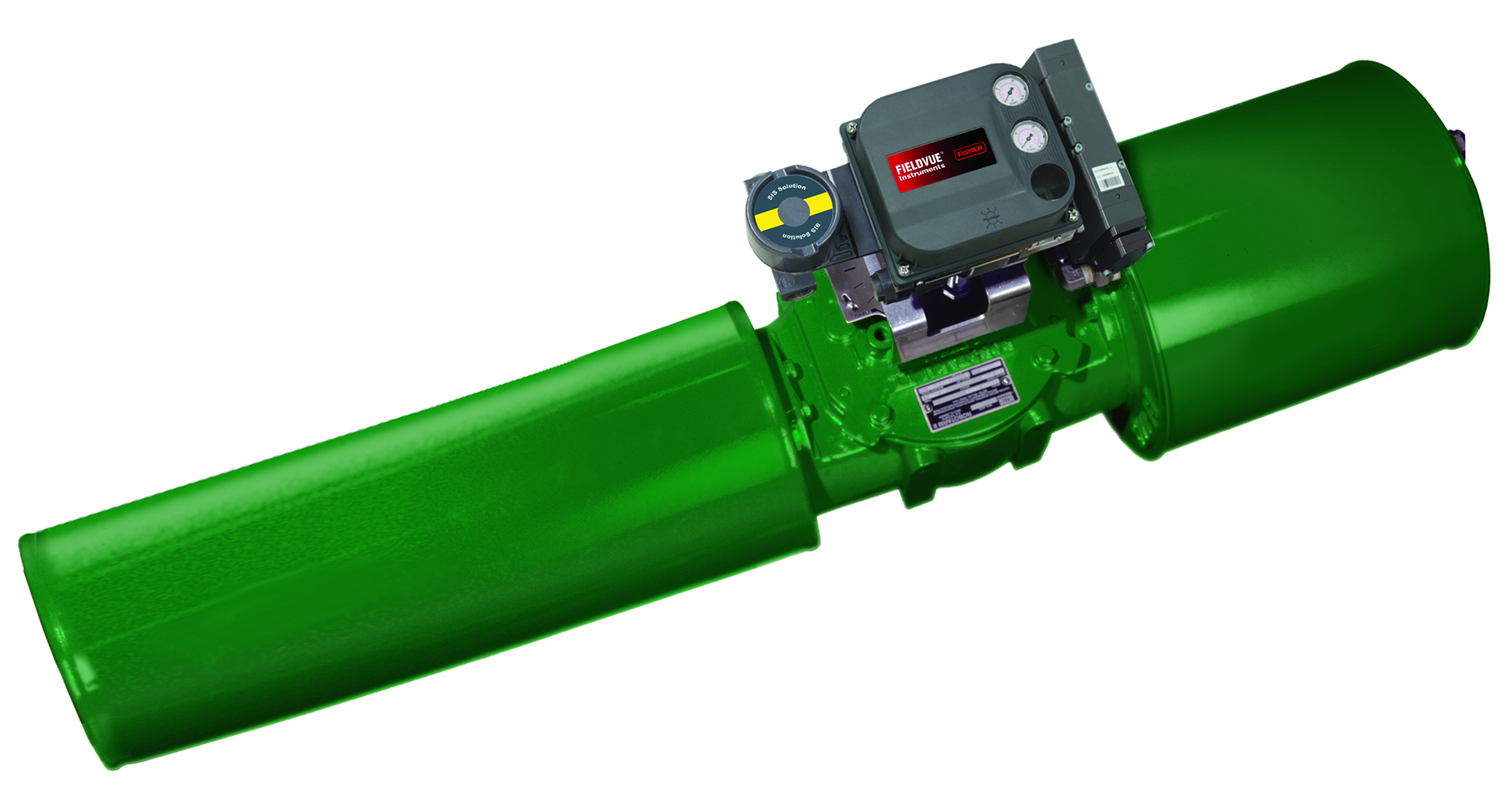Emerson Portfolio Manager Kurtis Jensen and Product Manager Lura Parrent recently published an article in the Jan 2023 issue of Hydrocarbon Processing. It is titled “Simplifying Safety Valve Installation and Maintenance” and it discusses new technologies on how to simplify safety valve installations while improving performance and reliability. The article is summarized below.
Hazardous materials and dangerous reactions are a constant threat in industry, so many plants depend on safety shutdown systems and valves to safeguard personnel, equipment, and the environment. This article discusses recent design enhancements in safety-rated digital valve controllers, which improve reliability and performance.
Safety shutdown valves
Most industrial plants are controlled by a basic process control system (BPCS), backed by a safety instrumented system (SIS) which independently detects unsafe conditions and automatically isolates and shuts down the plant (Figure 1).

Figure 1: A SIS uses its own sensors, logic solver, and final elements—independent of the BPCS—to detect unsafe conditions and protect the plant. (Click to enlarge)
SIS sensors can be made redundant and are generally very reliable, as is the logic solver. However, the shutdown valves are another matter, as the authors explain:
While every device in the SIS loop is critical, the shutdown valves are the heart of the interlock system, and they are usually responsible for more than 50% of the reliability problems.
Valves have moving parts subjected to the process and often cannot be tested while the plant is in operation. This makes shutdown valves the weakest link of the SIS loop and an obvious target for improvement.
Revised valve designs
A typical on/off safety valve includes a solenoid to command the actuator, which then moves the valve. Larger valves usually require a pneumatic booster to increase stroke speed, as well as a muffler to reduce noise. This combination has some inherent limitations:
- The solenoid and the actuator lack diagnostics.
- Valve position is not reported.
- Unless a bypass valve is installed, there is no way to test the valve during operation.
- Each of these parts must be included in the SIS reliability calculations, and each is a potential source of failure
To address these concerns, many users are replacing the solenoid, booster, and muffler with a single SIS-rated, high-capacity, digital valve controller (Figure 2).

Figure 2: Very high-capacity digital valve controllers (Fisher DVC6200 High Cv shown), replace the solenoid, volume booster, and muffler. The overall package is simpler, more reliable, and enables partial stroke testing.
Digital valve controllers provide extensive diagnostic information covering all aspects of the valve. They also provide feedback on the actual valve position, which can be used to take credit for a valve proof test should the plant unexpectedly trip.
The DVC6200 High Cv delivers all those benefits, but it also has a pneumatic booster and high flow muffler integrated into the design. The pneumatic spools are made of ceramic materials to minimize wear, and the muffler deadens sound without impacting stroke speed.
Additionally, this enhanced SIS-rated digital valve controller enables partial stroke testing, which can be critical in safety applications. The authors explain why:
Because the valve may not move for years, it can become stuck in a position due to process build up, corrosion, or other factors—and then fail to actuate when called into service.
Partial stroke testing does not prove 100% of the valve functionality, but it does cover most of the valve failure modes, and it can be used to extend proof testing intervals. During the test, a high diagnostic unit like the DVC6200 can monitor valve position and control actuator pressure, greatly reducing the likelihood of over stroking the valve and impacting plant operations should a problem occur during the test.
Improved reliability
All these features help the DVC6200 High Cv dramatically improve SIS shutdown valve reliability. The single device replaces three individual devices, provides a high level of diagnostics, and enables partial stroke testing.
These units can be installed as a retrofit on existing valves, or they can be specified as the control component on new safety shutdown valve installations. Optionally the entire valve assembly (digital valve controller, actuator, and valve) can be purchased as a single, engineered assembly.
Visit the Fisher Digital Valve Controllers section on Emerson.com for more on this and other digital valve controller solutions.


